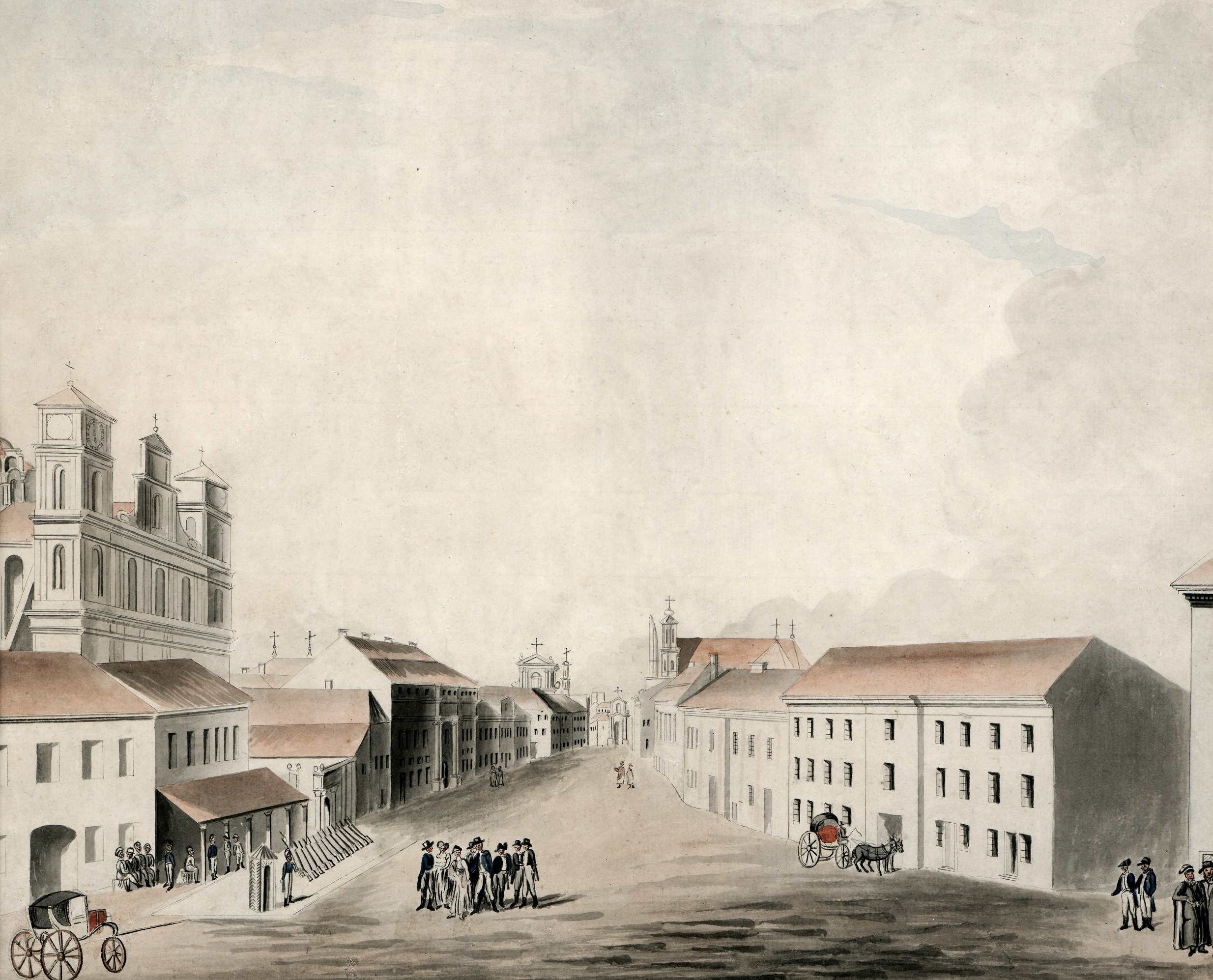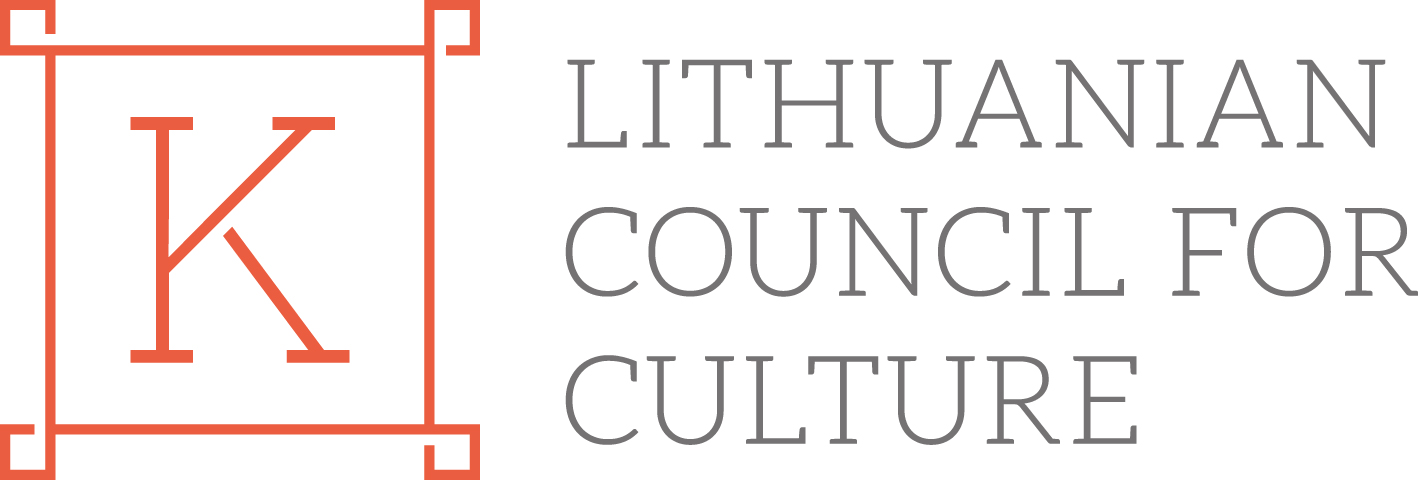Exhibition "Didžioji Street"
From 26 September - 12 January 2020
 At 5 pm on Wednesday, 26th September, the opening of the second exhibition in the series Streets of Vilnius by the Lithuanian Art Museum, called Didžioji Street (open 26 September 2019 – 12 January 2020) will take place at the Vilnius Picture Gallery (Didžioji St 4).
At 5 pm on Wednesday, 26th September, the opening of the second exhibition in the series Streets of Vilnius by the Lithuanian Art Museum, called Didžioji Street (open 26 September 2019 – 12 January 2020) will take place at the Vilnius Picture Gallery (Didžioji St 4).
A press conference will be held on Thursday, 26th September, 11 am. Joining it will be the director of the Lithuanian Art Museum Dr Arūnas Gelūnas, project leader Dr Margarita Matulytė, curators of the exhibition Justina Augustytė and Donatas Snarskis, and curator of the pupils’ exhibition Bartė Kuolytė.
The exhibition Didžioji Street continues the Lithuanian Art Museum’s series of exhibitions called Streets of Vilnius, dedicated to marking the 700th anniversary since the establishment of the capital of Lithuania. On the eve of this significant jubilee, which Vilnius will be celebrating in 2023, a sociotopographic museum study is being carried out in the city, seeking to unveil the development of the capital’s streets, demonstrate their culturally and linguistically heterogeneous nature and remind us of the more prominent historic events and phenomena, as well as introduce us to Vilnius citizens and their day-to-day life. Didžioji is one of the oldest and most important streets in Vilnius. It was part of the old Road of the Grand Dukes, as well as where the city hall, the Church of St Casimir and numerous palaces of the nobility were located, and it had well-developed infrastructure, which was of great importance to the city. How this age-old street developed, what lifestyle and customs were shared by its residents – the answers to these and many other questions are sought in iconography, artefacts and archive material.
A Testament to the Past, both Legendary and Casual
The uniqueness of Didžioji Street is revealed in the exhibition’s multiple themes: Free Air, Genuine Truth, Blue Blood and Mount Parnassus. The exhibition tells the street’s visual narrative through the artworks of Jan Rustem, Juozapas Peška, Jerzy Hoppen, Zigmuntas Čaikovskis, Justinas Vienožinskis, Adolfas Valeška and other painters. It includes the stunning painting Vilnius City Hall by Martynas Zaleskis, brought in for the exhibition from the National Museum in Warsaw, depicting the city’s key square as it appeared in mid-19th century. The social, economic and judicial centre of the city was the main warrantor and medium of ‘free air’. This is reiterated by another unique exhibit – the book of deeds and decrees of the Vilnius City Magistrate, which was being kept by the city hall between 1511 and 1654. The blue blood metaphor refers to the noble families who used to reside on this prestigious street – Radziwiłł, Pacas, Chodkiewicz, Tyzenhaus, Goštautas and Plateris families. Evidence of their lavish lifestyle includes oyster shells – remains of gourmet dishes, uncovered by archaeologists within the territory of Pacas Palace. The crown jewel of this exhibition is the decorative swan of the old pharmacy, which has been a nostalgic symbol of the old Vilnius for several generations of its citizens. Iconography reflects the polyconfessional nature of the street, and there is a specific original document proving that the Margaret Hakodesh Synagogue was established on Didžioji Street in 1897 right next to catholic, orthodox and reformed churches. Didžioji Street also acted as the centre of cultural life in Vilnius: the city theatre was located here, cinemas were appearing, as well as the Tallat-Kelpša Music School, Vilnius House of Models, Lithuanian Art Museum, a photography studio and multiple artist studios. A separate display room is dedicated to the friendly gatherings that used to take place in the studio of the painter Algimantas Jonas Kuras, where several portraits of him were created by his colleague Augustinas Savickas, psychedelic sketches were made by Povilas Ričrdas Vaitiekūnas, Dalia Kasčiūnaitė and Henrikas Natalevičius, where the art theorist Alfonsas Andriuškevičius tried out the artist’s home-made bow and arrow, and where the jazz musician Vladimiras Tarasovas would pop in for a game of cards.
First-Hand Impressions
The exhibition shows the urban street as a cultural phenomenon, a display item in a museum, showcased in various media. What did the painter Veronika Šleivytė talk about during the opening of her exhibition at the Museum of Atheism where philosophers Lev Karsavin and Vasily Seseman used to drink tea by a metal stove after the war? Why did the painter Pranas Gudynas become a restorer? What did the voices of the poet Birutė Pukelevičiūtė and the writer Kazys Boruta sound like? An interactive audio map (by Marius Juknevičius) will provide the opportunity to find the answers to all of these questions yourself. Archive footage from film chronicles supplements the social and urban panorama – a kaleidoscope of ever-changing views of the street from 1919 up until the restoration of independence (montage by Julija Matulytė). Continuing Jan Bulhak’s purposeful photography of Vilnius Architecture, a consistent documentation of contemporary life is being carried out by the photographer Tomas Kapočius, whose work is included in the street’s photo chronicles showcased at the exhibition. For the first time in Lithuanian museum practice, an archive of authentic street sounds is being created by recording the sounds of day-to-day life, various events and general atmosphere of the street, and combining them into audio collages (by Marius Juknevičius).
The Secrets of the Chodkiewicz Palace
Guided tours dedicated to the history of the street (by Jurgis Atroškevičius) have now become a tradition in this exhibition series. The Didžioji Street route integrates display halls and reality, not only telling the story of prominent heritage sites but also revealing intriguing, little-known facts (e.g. where the director Šarūnas Bartas lived and worked while creating his first-ever feature film Three Days etc.). For independent tours, a hand-drawn sociotopgraphic map of the street has been created (artist Žilvinas Jagėla) along with a supplementary webpage (solution by Arnoldas Urbelis).
A special tour leads through the Chodkiewicz Palace – the headquarters of the Lithuanian Art Museum. The local tour introduces visitors to the history of the palace and its residents up to the 20th century. It had been home to the Chodkiewicz family since the 17th century, temporarily housed Napoleon’s retreating army in 1812, became a dormitory for students of the Academy of Medicine and Surgery in 1834, and from 1919 onwards, housed Vilnius University teachers. Various prominent people of science, art and culture had apartments in this building: economist ‘Father of Litas’ Vladas Jurgutis, philosopher Vasily Seseman, poet Kazys Binkis, author Kazys Boruta, theatre critic Irena Veisaitė and others. Perhaps the greatest surprise is Lev Karsavin’s hideout, which the philosopher’s family installed in the cellars of the building in 1944
Tour information and booking is available by phone: +370 687 71586, and email: gidai.vpg@gmail.com
It’s Our History Too!
Next to the main display, there is an exhibition of the works of Vilnius Justinas Vienožinskis Art School pupils called Didžioji Street: Street Stories (curator Bartė Kuolytė, teachers Doc. Dr Audrius Novickas, Valdas Aničas, Ona Grigaitė, Linas Augutis). The untraditional pop-up show is part of the international project REvivEU with the motto “It’s Our History Too!” It holds exhibitions in ten European countries (The Netherlands, Hungary, Bulgaria, Poland, Italy, Switzerland, Spain, Cyprus and Lithuania) in cooperation with local museums and communities, dedicated to marking cultural diversity in Europe as well as the heritage, history and values shared by all Europeans. Street legends drawn, sculpted and animated by Vilnius pupils show the life of one of the oldest streets in the capital as part of a shared informal history of Europe.
Francysk Skaryna’s Moustache and Other Fun Activities for Children
The youngest visitors of the exhibition will have drawings to colour in (artist Žilvinas Jagėla). Colouring in the portraits of historic personalities will help children to become familiar with the heroes of Didžioji Street: publisher Francysk Skaryna who established the first-ever printing house in Lithuania in 1522 on Didžioji Street, the first female Lithuanian author Sophie de Choiseul-Gouffier, who met with the Emperor of Russia Alexander I and Napoleon Bonaparte in 1812, photographer Stanisław Filibert Fleury, who had a studio on Didžioji Street and immortalised Mikalojus Konstantintas Čiurlionis there in 1908, as well as various other historic personalities. A differentiated educational programme on the history of the street will be available for pupils of all ages (graphic artist Jolanta Sereikaitė).
Information on the topics of educational workshops and booking is available by phone: 8 659 58056, and email: jsereikaite@hotmail.com
World Animal Day at the Museum
In the context of an exhibition dedicated to the street phenomena, the museum is holding a one-day event entitled Let’s Celebrate World Animal Day at the Museum! For the first time in Lithuanian museum history, visitors are welcome to bring their friendly pets to the display spaces. They will have an opportunity to take a walk down “Didžioji Street” together, taking part in various occurrences, have adventures and enjoy great company. On 4th October, the noble Chodkiewicz Palace will open its doors to pets, granting them free entrance.
Information on the conditions regarding visiting the exhibition with pets is available by phone: (8 5) 2621883
Main partners:
National Museum of Lithuania
Vilnius Justinas Vienožinskis Art School
Partners:
Algimantas Jonas Kuras
Vintage film festival Pirmoji Banga
Film studio Kinema
Kretinga Museum
Institute of Lithuanian Literature and Folklore
Lithuanian Central State Archives
Lithuanian Archives of Literature and Art
Museum of the History of Lithuanian Medicine and Pharmacy
Lithuanian Art Centre Tartle
Wroblewski Library of the Lithuanian Academy of Sciences
Lithuanian State Historical Archives
M. K. Čiurlionis National Museum of Art
Rokiškis Regional Museum
Skalvija Cinema Centre
Šiauliai Aušros Museum
Photoconsortium – International Consortium for Photographic Heritage
National Museum in Warsaw
Vytautas the Great War Museum
Vilnius University Library
Vilnius University Museum of Zoology
Samogitian Museum Alka
Sponsors:
Lithuanian Council for Culture
Embassy of the Republic of Lithuania to the Republic of Poland
BTA Baltic Insurance Company
UAB Ekspobalta
UAB Media Traffic
UAB Vilko Apetitas
UAB Žinių Radijas
4 Didžioji st, Vilnius, Lithuania
+370 5 261 1685
vpg@lndm.lt















